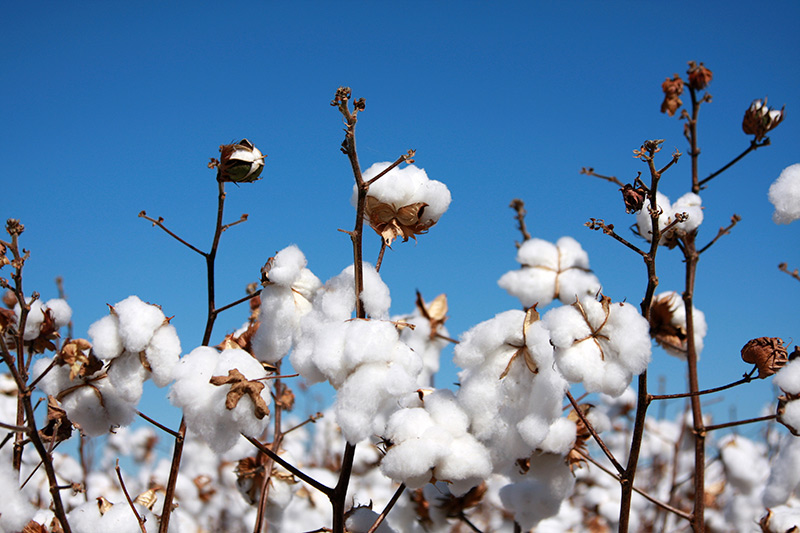Investing.com – Cotton futures were down for a second day on Tuesday, falling to a two-week low as improving U.S. crop conditions and concerns over a slowdown in demand from top consumer China weighed on prices.
On the ICE Futures U.S. Exchange, cotton futures for December delivery traded at USD0.9968 a pound during European afternoon trade, shedding 0.68%.
It earlier fell by as much as 0.73% to trade at USD0.9962 a pound, the lowest price since October 4.
The U.S. Department of Agriculture said in its weekly crop progress report published after markets closed Monday that approximately 34% of the U.S. cotton crop was harvested as of October 17, up from 26% in the previous week and higher than the five-year average of 29% for this time of year.
In Texas, the largest cotton-growing state in the U.S., nearly 30% of the cotton crop was harvested, up from 25% a week earlier and above the five-year average of 23%.
However, concerns over the U.S. cotton crop outlook remained as the report showed that almost 41% of U.S. cotton crops were rated in ‘very poor’ to ‘poor’ condition.
Nearly 30% of U.S. cotton crops were rated ‘good’ to ‘excellent’, unchanged from the previous week.
Cotton prices came under additional pressure after official data released earlier showed that China’s economy expanded at a rate of 9.1% in the third quarter of 2011, below forecasts of 9.2% and slowing from growth of 9.5% in the preceding quarter.
It was the slowest rate of growth since the second quarter of 2009, fuelling concerns over the health of the world’s second largest economy.
The U.S. is the world’s third largest cotton producer and the biggest exporter of the fiber, while China is the world’s biggest cotton consumer.
Meanwhile, lingering fears over the euro zone’s sovereign debt crisis saw the U.S. dollar strengthen against most of its major counterparts. The dollar index was up 0.3% to trade at 77.76.
A stronger dollar reduces the appeal of U.S. crops to overseas buyers and makes commodities less attractive as an alternative investment.
Elsewhere, on the Chicago Mercantile Exchange, wheat for December delivery fell 1.38% to trade at USD6.1538 a bushel, corn for December delivery dropped 1.41% to trade at USD6.3138 a bushel, while soybeans for November delivery tumbled 1.81% to trade at USD12.3038 a bushel.
On the ICE Futures U.S. Exchange, cotton futures for December delivery traded at USD0.9968 a pound during European afternoon trade, shedding 0.68%.
It earlier fell by as much as 0.73% to trade at USD0.9962 a pound, the lowest price since October 4.
The U.S. Department of Agriculture said in its weekly crop progress report published after markets closed Monday that approximately 34% of the U.S. cotton crop was harvested as of October 17, up from 26% in the previous week and higher than the five-year average of 29% for this time of year.
In Texas, the largest cotton-growing state in the U.S., nearly 30% of the cotton crop was harvested, up from 25% a week earlier and above the five-year average of 23%.
However, concerns over the U.S. cotton crop outlook remained as the report showed that almost 41% of U.S. cotton crops were rated in ‘very poor’ to ‘poor’ condition.
Nearly 30% of U.S. cotton crops were rated ‘good’ to ‘excellent’, unchanged from the previous week.
Cotton prices came under additional pressure after official data released earlier showed that China’s economy expanded at a rate of 9.1% in the third quarter of 2011, below forecasts of 9.2% and slowing from growth of 9.5% in the preceding quarter.
It was the slowest rate of growth since the second quarter of 2009, fuelling concerns over the health of the world’s second largest economy.
The U.S. is the world’s third largest cotton producer and the biggest exporter of the fiber, while China is the world’s biggest cotton consumer.
Meanwhile, lingering fears over the euro zone’s sovereign debt crisis saw the U.S. dollar strengthen against most of its major counterparts. The dollar index was up 0.3% to trade at 77.76.
A stronger dollar reduces the appeal of U.S. crops to overseas buyers and makes commodities less attractive as an alternative investment.
Elsewhere, on the Chicago Mercantile Exchange, wheat for December delivery fell 1.38% to trade at USD6.1538 a bushel, corn for December delivery dropped 1.41% to trade at USD6.3138 a bushel, while soybeans for November delivery tumbled 1.81% to trade at USD12.3038 a bushel.
